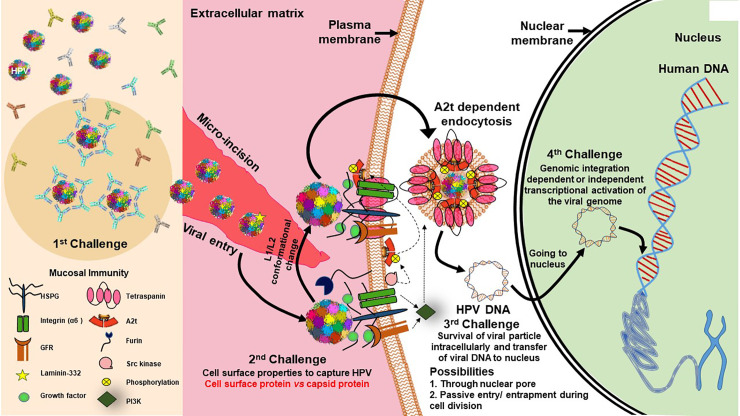Figure 3.
Challenges for establishment of HPV infection in basal epithelial cells of H&N region. Establishment of transcriptionally-active HPV infection in epithelial tissues faces various challenges to establish in the host cell. First challenge is posed by the mucosal immunity against HPV coat proteins that results in clearance by HPV specific antibodies (Jenson et al., 1991). Second challenge is viral entry which is specifically facilitated through micro-incisions and interaction of HPV-HSPG (heparan sulfate proteoglycan)-growth factor complexes with growth factor receptors (Surviladze et al., 2012) that leads to rapid activation of signaling pathways, such as PI3K/Akt/mTOR, which further inhibit autophagy of cell for viral benefit (Surviladze et al., 2013). Further, src kinase phosphorylates annexin A2(AnxA2) at Tyr23 (A2t), HPV recognizes A2t and binds to it in Ca2+ dependent manner and A2t dependent endocytosis of HPV particle and support trafficking of virus in cell (Dziduszko and Ozbun, 2013). Third challenge is presented for the viral DNA for survival in intracellular milieu and its transport to the nucleus, which could likely be through a passive entry/entrapment during cell division. Last and most pivotal challenge is presented for its genomic integration and transcriptional activation of viral genome to produce functional E6/E7 transcripts. In the absence of transcriptionally activation of E6 and E7, the lesion is similar to HPV negative lesion. On the other forced expression of E6/E7 can independently derive keratinocyte transformation.

